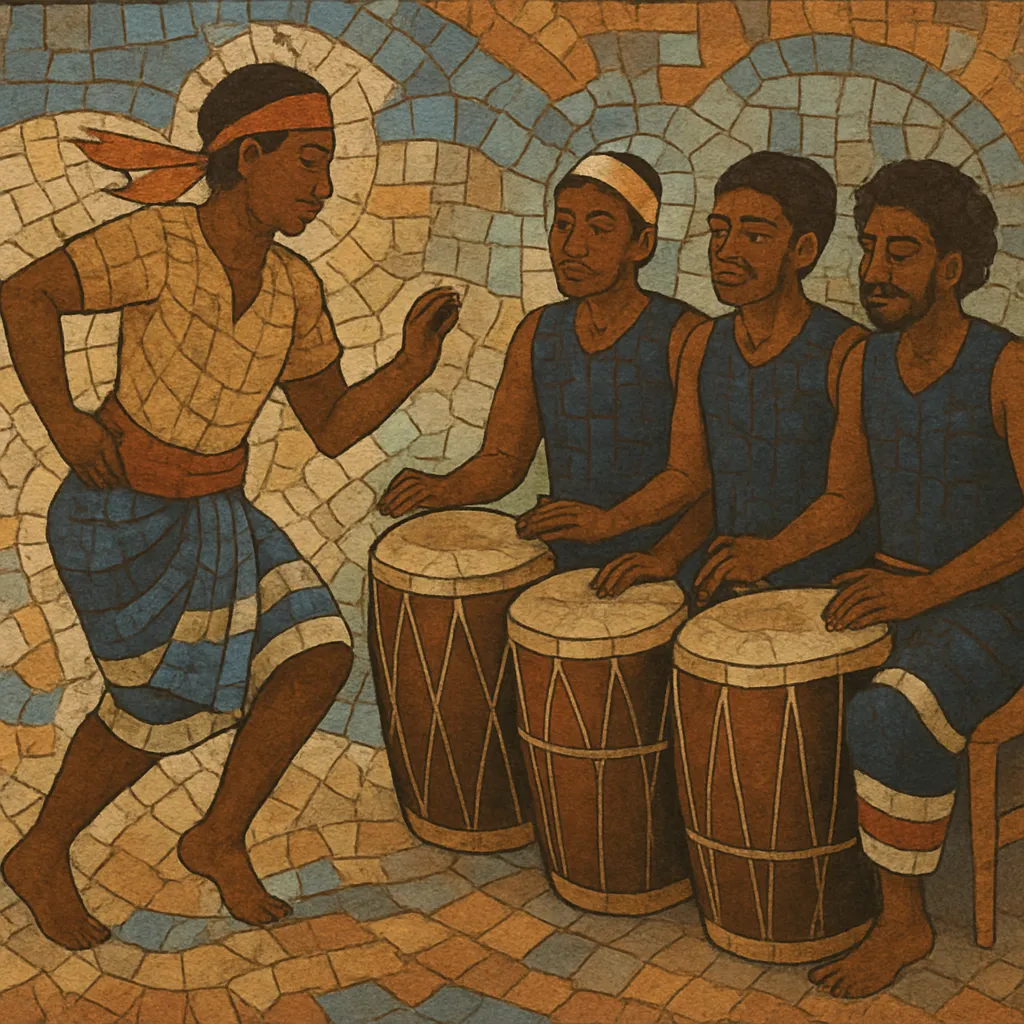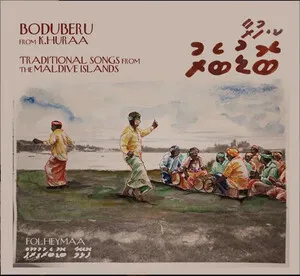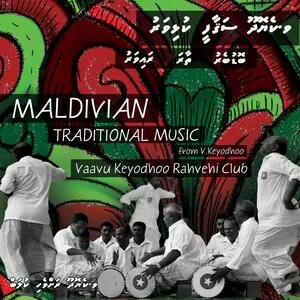Boduberu is a traditional Maldivian drumming-and-dance genre performed by an ensemble of large double-headed drums, a lead singer, a responsive chorus, and handclaps.
The music typically begins at a moderate tempo in a steady meter and gradually accelerates to an ecstatic climax, encouraging vigorous communal dancing. Call-and-response vocals in Dhivehi, everyday-life themes, and a trance-inducing rhythmic buildup are characteristic.
Drums are commonly carved from coconut wood and headed with animal skin, and auxiliary timbres such as the onugandu (a scraped idiophone), metal shakers or bells, and whistles add texture. As a public, participatory folk art, boduberu functions as social entertainment, celebration, and identity marker across the islands of the Maldives.
Boduberu is widely believed to have reached the Maldives via Indian Ocean trading routes, where contact with East African sailors and laborers introduced powerful communal drumming practices to the islands. Oral histories place its emergence roughly around the 11th–12th centuries, when Maldivians adapted imported rhythmic aesthetics to local language (Dhivehi), festivities, and instruments.
Over generations, coconut-wood drums fitted with animal skins became the core sound. Ensembles codified roles: a lead drummer and singer set the cues; multiple supporting drummers sustained interlocking ostinati; a chorus answered the leader, and handclaps plus onugandu (scraped idiophone) and small metallic timbres filled the spectrum. The performance arc—starting steady and accelerating into an ecstatic, communal dance—became the signature of boduberu.
Boduberu has long served weddings, festivals, community gatherings, and seafaring celebrations. Lyrics balance wit and social commentary with themes of love, labor, and island life. Its participatory nature reinforces social cohesion and Maldivian cultural identity.
In the 20th and 21st centuries, boduberu troupes organized more formally, performing at national events, resorts, and international festivals. Amplification and staging expanded its reach while core elements—call-and-response singing, layered drumming, and accelerando climax—remained intact. Contemporary Maldivian fusion acts also draw on boduberu grooves and textures to connect heritage with modern audiences.






